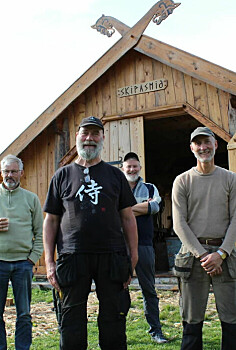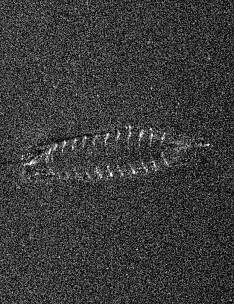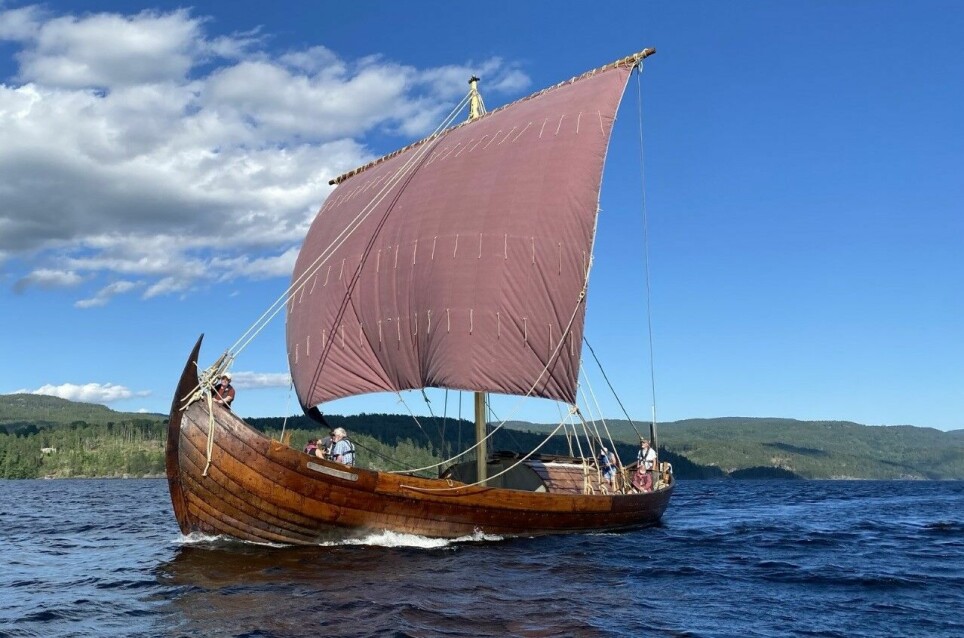
The world's most modern Viking ship can parallel park
You probably haven’t heard of electric Viking ships before. Old meets new in ‘Saga Farmann’ — and the Vikings would probably approve, being the innovators that they were.
The Klåstad ship is often referred to as ‘Norway’s fourth Viking ship’, according to Norwegian Wikipedia. It was discovered in 1893, but not excavated until 1970. Unlike the other known Viking ships, the Klåstad ship was not used for a burial, it is a shipwreck.
In Vestfold, a district in eastern Norway, the Oseberg Viking Heritage Foundation has built a replica of the Klåstad ship.
The ship was launched in 2018 and is named ‘Saga Farmann’. From its location, docked along the wharf in Tønsberg, there is little evidence that the ship is powered by the latest in electric motors.
Needed approval
The foundation built the ship with long-distance voyages in mind. But it’s not (any longer) quite so easy to set sail with a Viking ship outside Norwegian waters.
‘Unfortunately, it has turned out that an open wooden ship, built the way that was used in the Viking Age, cannot realistically get approval as a passenger ship outside Norway's territorial waters,’ the foundation wrote on its website in 2018.
Long story short: It was a tortuous road to get approval.
“We found out early on that in order to be allowed to travel on Europe's waterways, you must have your own engine power on board,” Lars Bill said to sciencenorway.no. He is project manager for ‘Saga Farmann’.
The modern Viking gang was clear on one thing: They didn't want an old, smelly diesel motor with a propeller to power the new ship.
“We wanted an environmentally friendly variant with electric propulsion,” Bill said.
A result of many years of engineering experience
That's where Finn Limseth and his colleagues came into the picture. Limseth is the founder and part owner of SeaDrive, which makes electric boat motors.
Limseth has many years of engineering experience. He has worked with underwater technology in the North Sea, among other things. He has also worked for many years with side propellers and anchor winches for the company Engbo.
“I have seen a lot of strange things in the North Sea,” Limseth said, referring to construction quality and materials used underwater.
Now he has brought his experience from both worlds to his own company.
It started with an old Draco
“I met these guys when they were test-driving a prototype in the canal below us,” Jan Vogt Knutsen said. He is construction manager at the Oseberg Viking Heritage Foundation.
The year was 2018, and the prototype was an old Draco boat that had just had a new electric motor installed. Draco boats are iconic Norwegian-produced fibreglass motorboats that were first sold in the 1960s. Knutsen wondered what this was all about and chatted with them.
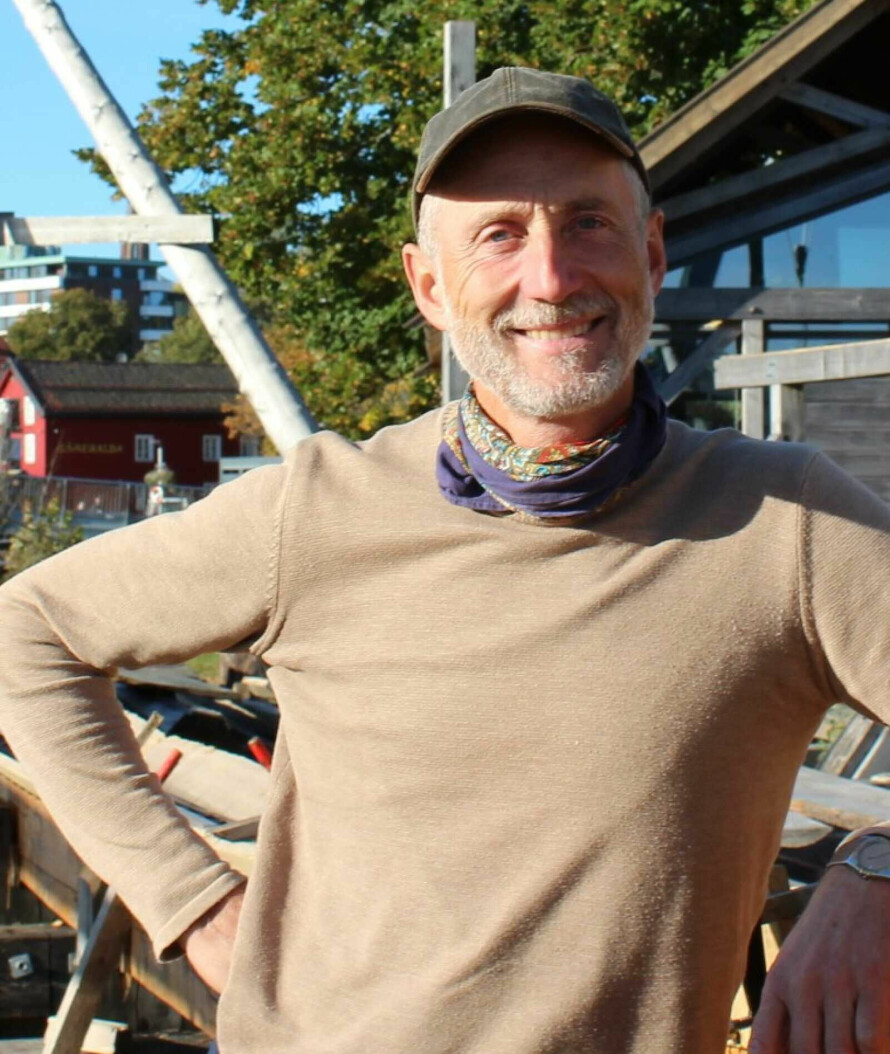
“‘You are clearly the right people to create a specially adapted electric system for a Viking ship’, I said somewhat jokingly,” Knutsen said.
Limseth did not consider it a joke. He took up the challenge and invited people from the Oseberg Viking Heritage Foundation to a meeting.
Lars Bill and his people went to the meeting with strict requirements for what they needed.
Can turn completely around
They wanted a motor that could not be seen, heard or smelled. It sounded a bit like requirements taken from a fairy tale. The whole thing also had to be controlled with a joystick.
But Finn Limseth is an engineer and innovator. And so ‘Saga Farmann’ became a test ship for SeaDrive to play with.
The system they came up with involves four electric motors, called pods. They are controlled by a joystick. Apart from that, all the technical stuff is hidden under the deck.
“The pod can turn around completely, plus or minus 120 degrees. That gives you an ability to manoeuver that is completely unique,” Limseth said.
“With our system, you can motor backwards like a traditional Viking snekke,” which are pointed on both ends, says Limseth.
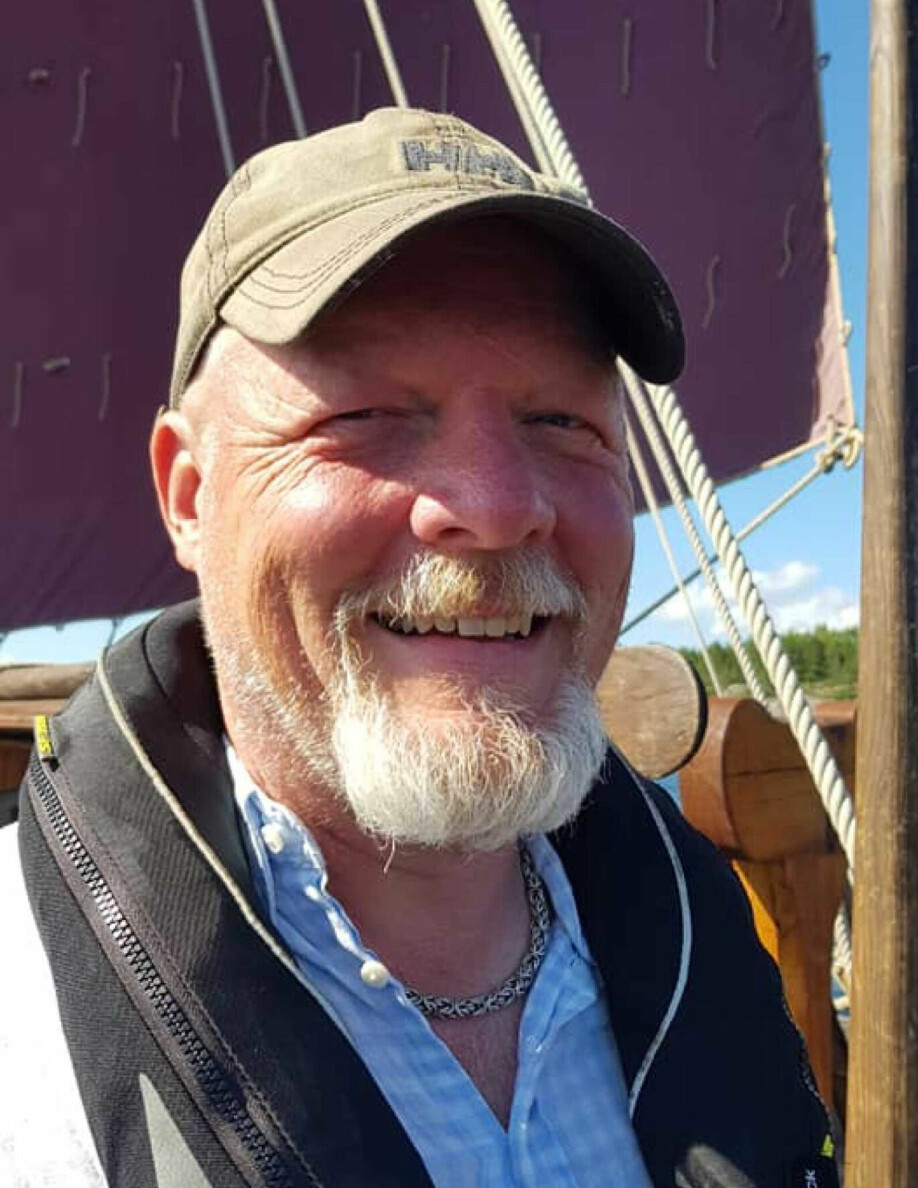
Four of the pods were mounted on the Viking ship: two in the front, two in the back.
The pods from SeaDrive are made from a material called aluminium bronze, which is highly corrosion resistant.
Can go on long journeys
The first journeys with the Saga Farmann after it was fitted out with its electric motors involved a bit of trial and error.
“We have had a new upgraded solution roughly every year,” Bill said.
Each improvement is a step forward.
In the beginning, they had no joystick control, so the pods had to be controlled manually. One person for each of the four pods, with two people given responsibility for communication between the controllers.
With limited battery capacity and manual steering, they snaked the ship up through the Telemark Canal.
“There were a number of things that stopped and there were some problems. This is what it’s like when you're involved in the basic development of a completely new solution,” Bill said.
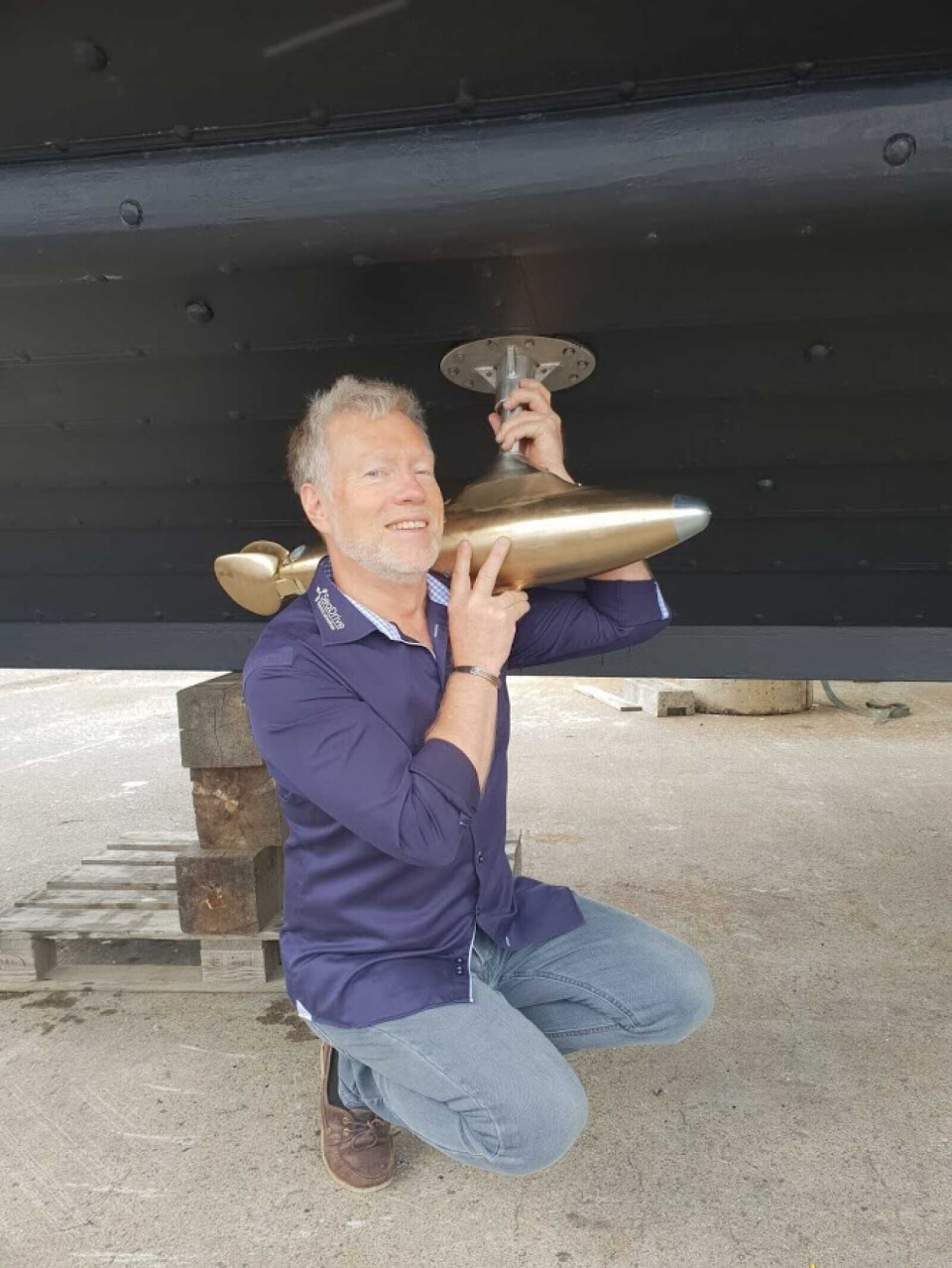
There was never any danger, because SeaDrive showed up whenever problems arose, he says. That’s why the team always made progress.
After several updates and new sets of pods, the final solution may now be in place, Bill said. They have been on several long journeys in Norway and Scandinavia, with only one situation where the engines stopped working.
Setting sail for Istanbul
They’ve reached the stage where they trust the system enough to be willing to embark on journeys without accompanying boats. This is crucial for the great journey that they have planned to begin on 29 April 2023.
“This is the trip the ship was actually built for,” Bill said. “We will sail through canals, rivers and streams down to Istanbul, Turkey.”
‘Saga Farmann’ will spend the winter there before crossing the Mediterranean again the following year.
Before then, Limseth hopes that they will be able to start regeneration with the pods, using updated software. Regeneration is a kind of engine braking effect that charges the battery when the ship is under sail and the regeneration function is activated.
The crew knows there will be long distances between charging stations, so in addition to the batteries, ‘Saga Farmann’ has a diesel generator on board. But they will only use environmentally friendly diesel, Bill said.
Parallel parking Viking ship
The crew has encountered many curious people when they have been out with ‘Saga Farmann’, says Bill.
“One thing is its enormous manoeuvrability. We can turn it around in a circle and drive sideways. We can sneak in with a clearance of ten centimetres and have full control,” he said.
“When we docked in Risør during the wooden boat festival last year and parallel parked the Viking ship, curious people came over from the restaurant next door,” he said.
Racing boat with pods
“Many say that electric boats won’t be a realistic alternative for another five years,” Limseth said.
He is doing his part to prove that wrong. Admittedly, electric propulsion doesn't suit everyone's needs yet.
Take the racing boat of the Swedish alpine ski racer Jon Olsson as an example, he said. Olsson owns a fifty-foot carbon fibre boat, able to travel at speeds of more than a hundred knots, with two engines of 1,500 horsepower each.
“It has two of our pods as a hybrid. These pods are not just designed to provide a smell-free, mellow operation,” he said.
Large diesel-powered racing engines require servicing every fifty hours.
“So the half hour when he has to drive at three knots from the quay to open water, he would rather use electric propulsion to save his engines,” Limseth said.
Limseth often hears that there are currently too few charging stations. Completely wrong, he states.
“There is an untapped potential to easily double the number of charging stations by allowing boating associations to earn income by selling electricity. Many have compressors for bubble systems in winter and thus power capacity that’s available in the summer,” he said.
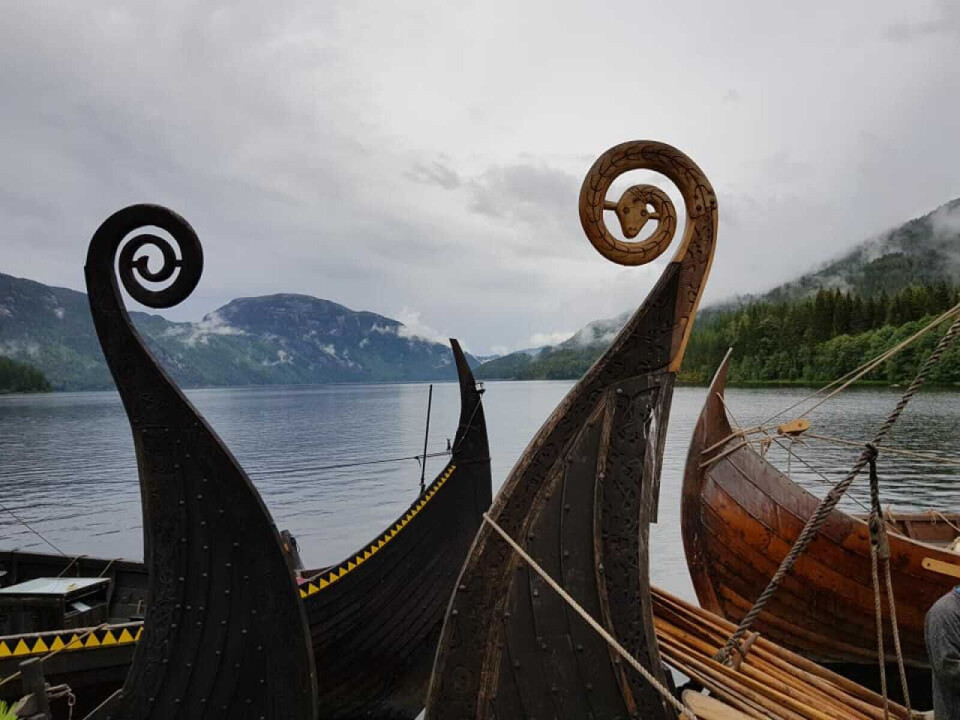
The Vikings were innovators
According to Lars Bill, old meets new in ‘Saga Farmann’.
“We are modern people, and even though we are building a culture to preserve
Viking Age craftsmanship, it’s very fun to bring innovation into this,” he says.
Bill says the ship represents the meeting of the best of two worlds. They describe the vessel as the world's most modern Viking ship. The Vikings were also innovators, he points out. The blacksmith was the great innovator of the time.
“I think it's cool that we have taken the most innovative thing we have in our time and connected it to this project. There doesn’t need to be any conflict between the new and the old as long as you have respect,” he said.

Research on electric boat motors
It is not only entrepreneurs like Finn Limseth who have seen the potential in electric boat engines. Researchers are also working on this.
Earlier this year, Trondheim was home to the world's first city-based trial operation of a self-driving electric passenger ferry.
“In the longer term, the technology can be further developed to create green, flexible and cost-effective transport along the entire Norwegian coast,” said Morten Breivik at the Department of Engineering Cybernetics at NTNU in an article from the university published on sciencenorway.no.

In 2018, we wrote about the world's first autonomous, zero-emission open-top container ship (in Norwegian). The plan was for it to go to Telemark and to be fully electric.
And in April this year, the Norwegian Broadcasting Corporation wrote about this ship's christening (in Norwegian).
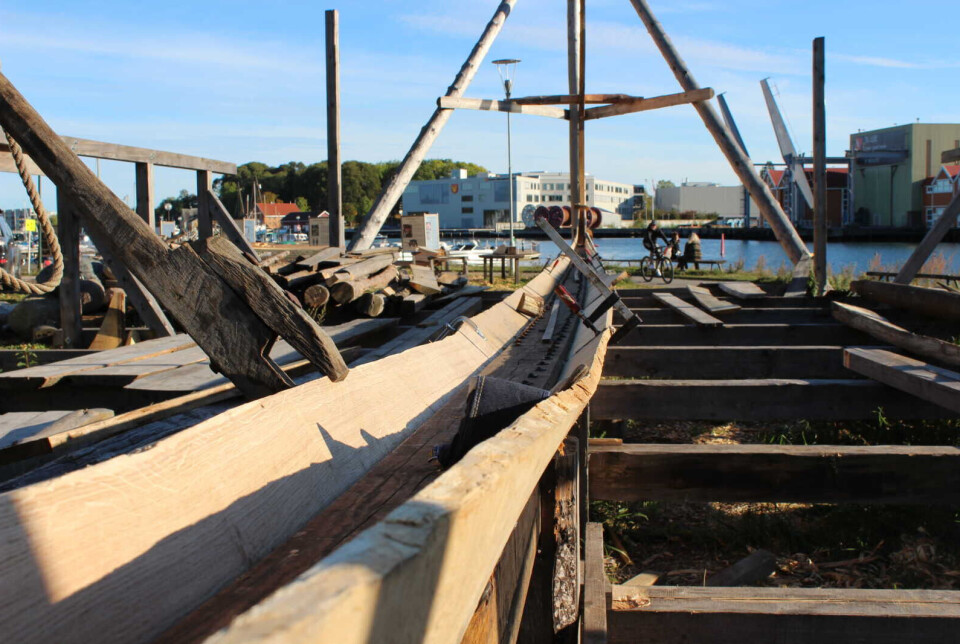
Translated by Nancy Bazilchuk
———
Read the Norwegian version of this article at forskning.no








